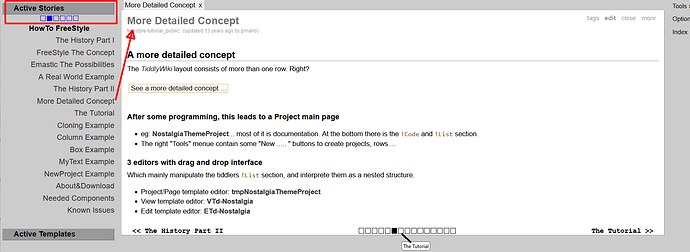A few recent discussions have once again returned to the subject of next and previous tiddlers. In a tiddlywiki with a good set of your information organised with tags, references and even fields or list fields containing tiddler titles, actually presents us with more than one possible Next and Previous. I think this presents an opportunity as well as a challenge.
Background
For Example, think of a tiddler that has a tag, such as On tiddlywiki.com a tiddler with the TableOfContents tag, for example the “Features” tiddler. Such a tiddler will appear in the list of tiddlers that have the same tag. As a result we can determine the next and previous tiddler in the list and the first and last tiddler in the list. We can even obtain the numeric position of the tiddler in that tag list.
Now also consider the case where the current tiddler has more than one tag, for example the “addsuffix Operator” tiddler, it has both the “Filter Operators” tag and “String Operators” tag. Now we have two sets of next/previous, first/last, one for each tag.
- It is quite easy to imagine cases where you may have half a dozen tags. Which next/previous is relevant to your current navigation of your data?
Lets not forget the current tiddler may be tagging one or more other tiddlers itself, or the current tiddler is referenced elsewhere, contains links within it etc…
You start to realise that Next/Previous navigation is insufficient to navigate or describe the relationships between tiddlers.
The Challenge
I want to open this discussion to the community to think about new ways to assist navigation across multiple tiddlers according to their various relationships. Can we represent this complexity in simpler ways, perhaps graphically or visually?
- What if we trace the journey, and allow you to easily take detours but return to your place, so you can continue through a particular set? Perhaps return another day and continue your journey?
- What if you were on more than one Journey at a time?
- What if we store analytics about the places (tiddlers) you visit the most, and provide it back to you to learn about your own usage of your tiddlywiki and the data you choose to store in it?
- Or use this to build decision trees and optimise the paths you take?
I have some ideas but want to hear yours without prejudicing your thoughts.
 .
.


